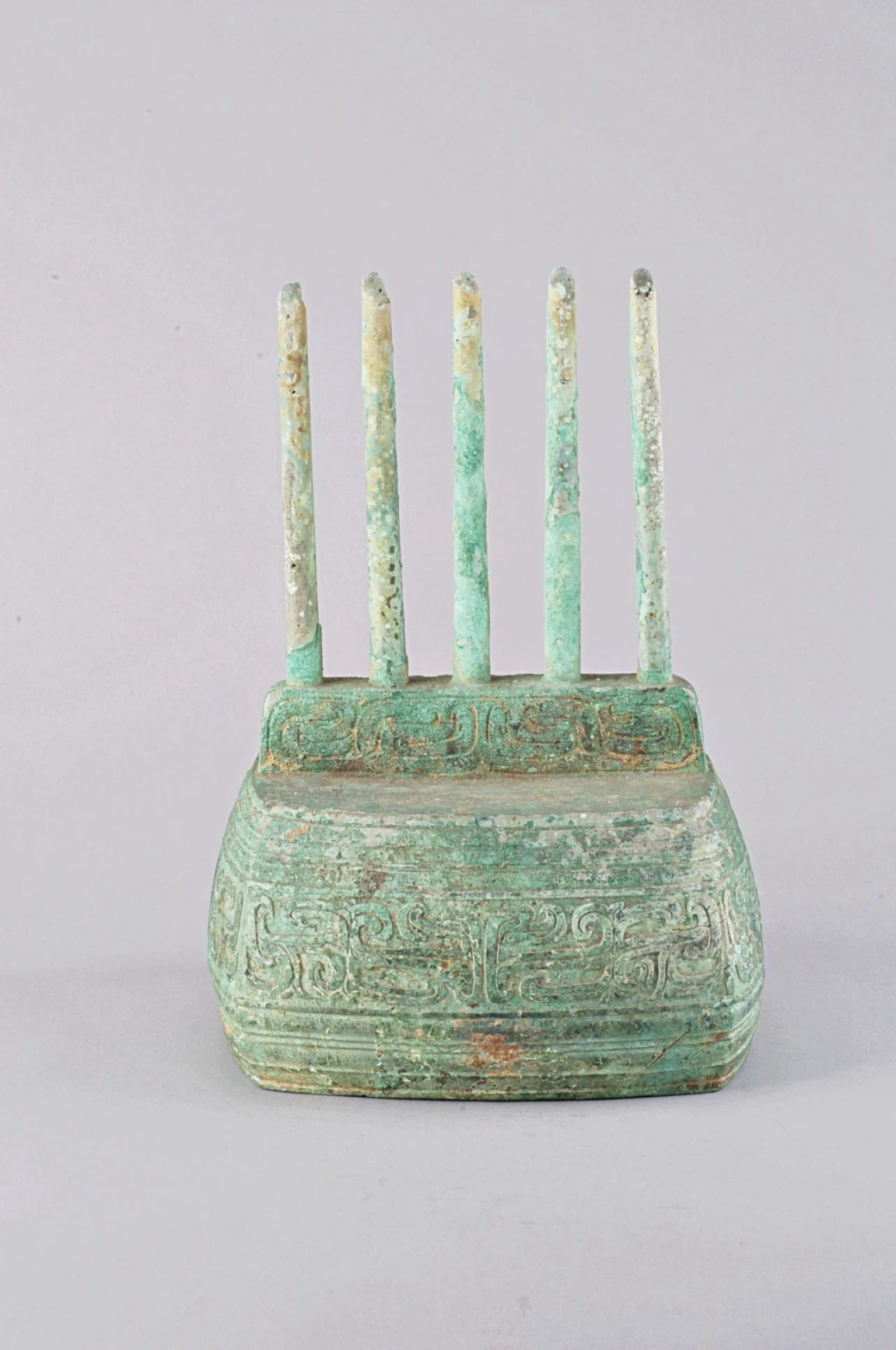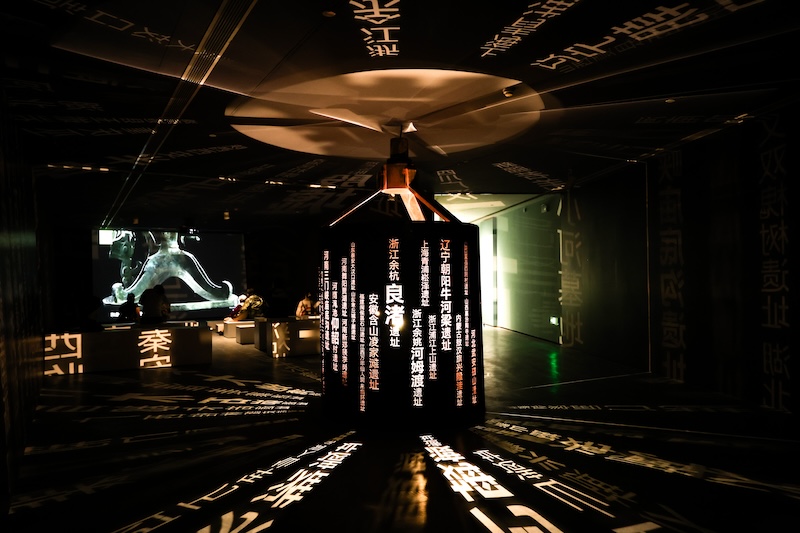
China's earliest duty-free customs clearance certificate - the Ejun Qijin Festival, the Western Zhou Dynasty cloud pattern five-column vessel known as the "ancient Wi-Fi", and the Spring and Autumn Period hollow dragon-ear bronze jar with craftsmanship comparable to the Zenghouyi Zunpan were unveiled in Beijing.
On July 18, the exhibition "The Sound of Mountains and Rivers: A Grand View of Anhui Culture and Art" opened at the Beijing Minsheng Art Museum. The exhibition brought together nearly 400 cultural relics and artworks, including representative artifacts from sites selected as "the top ten archaeological discoveries in the country" such as Lingjiatan, Mopanshan, Shuangdun, Yuchi Temple, Liuzi Canal, and Ming Zhongdu.

Five-column vessel with cloud pattern from the Western Zhou Dynasty

Ejun Jinqi Festival
It is reported that this exhibition is the largest Anhui cultural theme exhibition held in Beijing in recent years. The exhibition has a large space of 6,000 square meters and brings together nearly 400 cultural relics and artworks. The exhibition is divided into four sections, "Water, Mountain, Situation, and Humanities", and twelve units.
The prologue begins with "Spring Sail Journey", a homecoming diary of Cheng Ting, a salt merchant from Huizhou in the Qing Dynasty, and leads the audience into the typical environment and atmosphere of Anhui with the rhythm of visiting the Peach Blossom Spring.

on site
The first part, "Water", displays important prehistoric sites and cultural relics in Anhui, such as Lingjiatan, Xuejiagang, Mopanshan, Shuangdun, and Yuhui, and explores the significance of the three major water systems of the Yangtze River, Huaihe River, and Xin'an River in the construction of Anhui's cultural background; the second part, "Mountains", describes the influence of Anhui's famous mountains on the formation of the oriental aesthetic paradigm, and highlights the role of Huangshan in shaping the process of Chinese culture and art for thousands of years.

on site
The third part of the exhibition, “Situation”, highlights the diversity and openness of Anhui culture through displays of bronzes from the Shang and Zhou dynasties, porcelain from the Grand Canal of the Tang and Song dynasties, and the ruins of Zhongdu in the Ming Dynasty.
Among them, the jade eagle unearthed from the Lingjiatan site is a symbol of the pioneer of civilization; one of the "treasures of the museum" of the Anhui Museum - the Ejun Qijinjie (Warring States Period), is the earliest "duty-free clearance document" representing China; the cloud pattern five-column device is a cultural relic from the Western Zhou Dynasty. Because its shape resembles today's routers, it is jokingly called "Wi-Fi in the Western Zhou Dynasty"; the treasure of the Bengbu Museum - the hollow dragon-ear bronze jar (Spring and Autumn Period), its casting technology is similar to the famous bronze products of the Eastern Zhou Chu system such as the Zenghouyi Zunpan, the Lianhe Fanghu, and the Wangziwu Ding; the Songze culture pottery pig zun unearthed from the Mopanshan site in Langxi, Anhui Province, about 6,000 years ago, and the large-mouthed jars, cup-shaped beans and other artifacts unearthed from the same period, show that there were already differences in class or wealth in society at that time.

Ceramic Pig

Jade Eagle
The fourth part, "Humanities", showcases Huangmei Opera, Huizhou Three Carvings, Four Treasures of the Study and other intangible cultural heritage skills, as well as Tongcheng School and Six-foot Alley, focusing on the group of "Anhui people" and reflecting the beautiful lifestyle created in Anhui. In the finale, the presentation of Anhui regional culture reflects the spiritual world of the Chinese people, thus reflecting on how to spend their lives.


Exhibition View
Among these exhibition units are "Panorama of Huangshan" by Xue Zhuang of the "Xin'an School of Painting" and "Spring Trees and Strange Peaks" by Lang Jingshan; there are also exquisite stone-carved architectural components unearthed from the Ming Zhongdu ruins, which came directly to the exhibition hall from the field excavation site, carrying the scent of earth... Behind these precious cultural relics that bear the traces of time, they seem to be silently telling the endless story of innovation on this land.

Spring Tree Peak
Geng Shuo, the curator of this exhibition, believes that this exhibition does not connect the exhibits according to the general timeline, but attempts to explore the relationship between Anhui's natural landscape and human creation. It is expected that the audience will feel the warmth and emotion conveyed by the exhibition when visiting the exhibition, and reflect their personal spiritual world from the cultural relics exhibition. Bian Jian, deputy director of the Anhui Museum, said that this exhibition shows Huizhou culture, Yangtze River culture, Huaihe River culture, Grand Canal culture and Huangmei Opera culture from the perspective of cultural relics and history, and explains Anhui's unique historical heritage and cultural diversity.

Exhibition View

Exhibition View

Multimedia Display
It is reported that this exhibition is jointly launched by Beijing Minsheng Art Museum, Anhui Museum, Anhui Provincial Institute of Cultural Relics and Archaeology, National Library, National Art Museum of China, Shanxi Museum, Tsinghua University Art Museum, Bengbu Museum and nearly 30 other institutions. The exhibition will last until October 30.
